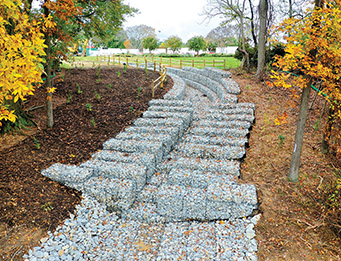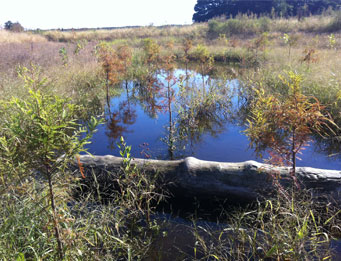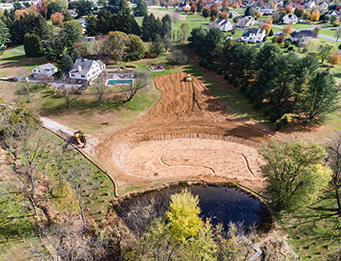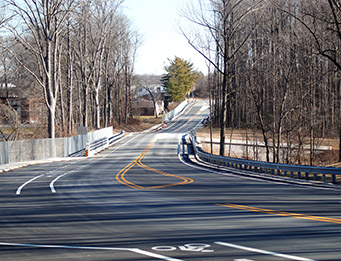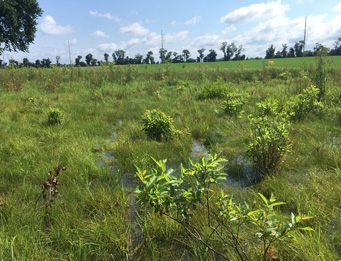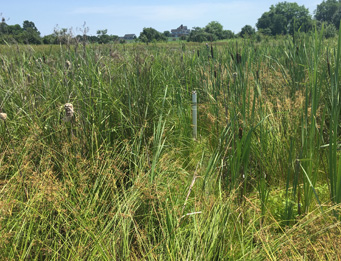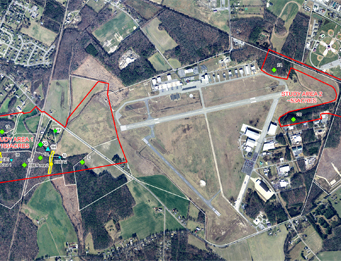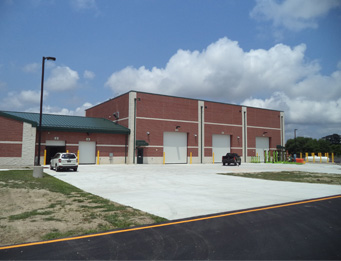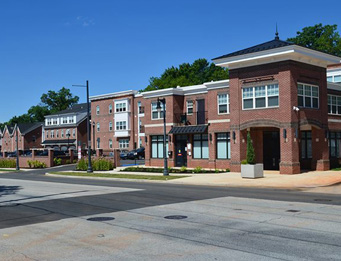Channel Restoration at Avenue North
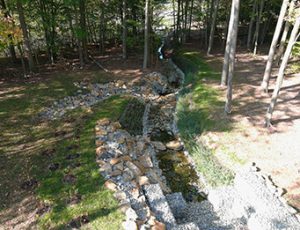
Channel restoration at Avenue North is an award winning project that included channel restoration, bank stabilization and new innovative stormwater outfall structures to prevent erosion and loss of habitat and tree canopy. It improved downstream water quality for a large drainage system and reduced risk to the public and private infrastructure associated with the mixed-use development in Fairfax. The completion of the restoration and bank stabilization project has added a visually striking feature to the owner’s property.
As part of a Land Development Proposal, the property owner and developer were required by New Castle County to assess and correct severe ongoing erosion within an existing drainage channel as part of the 79-acre Avenue North 1.84 million square foot mixed-use redevelopment of the former AstraZeneca North Campus. Landmark Science & Engineering was charged with developing a solution.
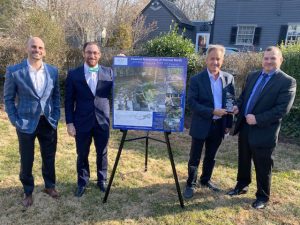
Cause of Severe Erosion
This erosion was a result of long-term uncontrolled discharges during storm events from an existing 48-inch concrete pipe outlet. The existing underground system piped stormwater runoff from a ±60-acre developed drainage area. These pipes converged into a 48-inch concrete pipe that discharged up to 120 cubic feet per second of stormwater directly into an existing earthen channel with only outlet protection. The peak flows created a headcut that ultimately scoured the channel and compromised the banks resulting in loss of tree canopy over time. This existing channel flowed southward through a forested area and exited the site through an impromptu concrete structure with limited hydraulic capacity for peak flows. Over time, the outflow capability of the pipes and structure as well as its stability became compromised as it became clogged with debris. Eventually, water bypassed the structure due to erosion. This drainage system was part of a master plan for the creation of the AstraZeneca North Campus, relocation of Powder Mill Road, and the construction of the Blue Ball Road network as it exists today.
Water Resources Engineering
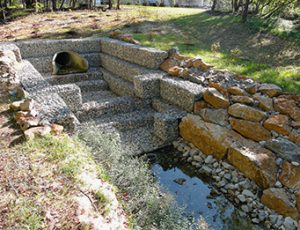
The project required developing a floodplain analysis of before and after conditions, peak stormwater flow rates, and a site-specific design of structural and non-structural (vegetative) measures to stabilize the drainageway. Elements of the solution included a small section of concrete culvert to convey site outflow with an innovative overflow relief design, a two-tiered gabion basket scour hole and weir structure to control inflow energy, and two J-hook rock vanes in the channel bed to direct water flow. Bank restoration design reduced the steep slopes of the existing channel and provided protection with selective reuse of site rock, geotextile fabric, live willow stakes, native plant landscaping and seeding for long-term stabilization.
Environmental Permitting
Delaware DNREC Wetlands Section issued a Subaqueous Lands Permit and the U.S. Army Corps of Engineers granted a Nationwide Permit 13 for this project in February 2020. Compensatory mitigation was waived by both agencies as the benefits of the project (stemming erosion and improving downstream water quality) outweighed the minor impacts to jurisdictional waters. Construction of the new outfall structures and restoration of the channel was completed in September 2020. Learn more about Environmental Permitting services.
Scope of Work
Landmark performed the topographic surveying, wetland and forest stand delineations, state and federal environmental permitting, civil/water resources engineering, landscape design, construction stakeout and as-built surveys.
Engineering Excellence Awards
Grand Conceptor Award – 2021 ACEC Delaware – Engineering Excellence Awards (2/2021)
National Recognition Award – 2021 ACEC – Engineering Excellence Awards (6/2021)
